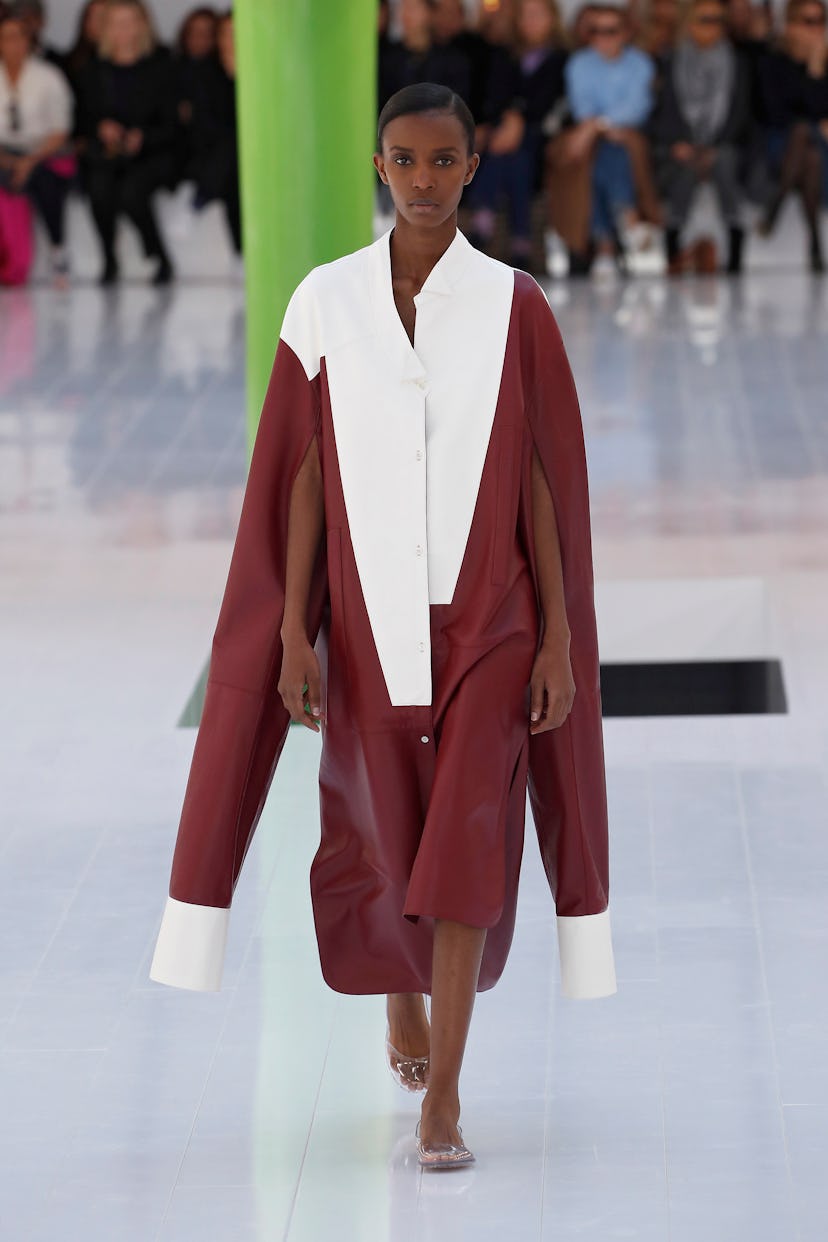Loewe’s Bold New Shapes

The architectural shape of the anthurium plant towered over the runway at Loewe’s spring 2023 show. The gravitational pull of its silhouette not only enchanted creative director Jonathan Anderson, it represented the crux of the entire collection.
Line, shape, tension, and precision blurred the lines between artificial and hyper-real; massive anthurium flowers bloomed as tops, grew as shoulder straps, and were planted on strappy sandals.
Last season, Anderson took Surrealism to new extremes, with balloon-shaped shoes, lip-etched bustiers, and mini dresses taking on the silhouette of literal cars. It was more than evident that the thesis behind it all called for making something “normal,” like fashion, feel strange—and maybe even unfamiliar.
But for spring 2023, Anderson peeled back the layers of circus-like surreality to reveal something even stronger: bold new visions of shape, and hinting at fashion as a shield. Take, for example, the polo mini dresses with pleats that veered out front and center, or the strapless gowns with massive panniers poking out at the waist. It was fashion up close, then pulled back—and the kind of garment you wear to keep people from getting too close.
Those same threads of tension continued throughout the collection with elongated leather sleeves that nearly touched the floor. When contrasted with the short, shrunken silhouettes like little leather shorts and glassy-textured playsuits that also were shield-like in their execution, it revealed Anderson’s statement about bluntness in all of its essence. If Surrealism was distilled down to shape, this is what it would look like.
Elsewhere, sweater necklines were distorted as if they were put through a funhouse mirror, with rounded, cardboard-like facades partially obscuring faces. They represented the awkward spaces between being hidden in plain sight—and yet, so very much on display. Same thing with the draped mini slip dresses, whose necklines came tiered and spiked. The irony of the collection felt incredibly present.
As we head into a recession—and, simultaneously, a recent shift into a life free of Covid-era restrictions—it’s interesting to think of the role perceivably challenging clothing plays in women’s lives. The dresses with a modern version of a pannier reflected a superfluous vision, as did the sweater shields.
In the 18th century, the pannier was also a symbol of economic status—the wider the dress, the richer the wearer was. They also prevented people from doing some of the most practical activities, like entering doors, without turning sideways. Impracticality becomes a luxury and shape eschews practically with another collection from Anderson that feels brilliantly brainy.